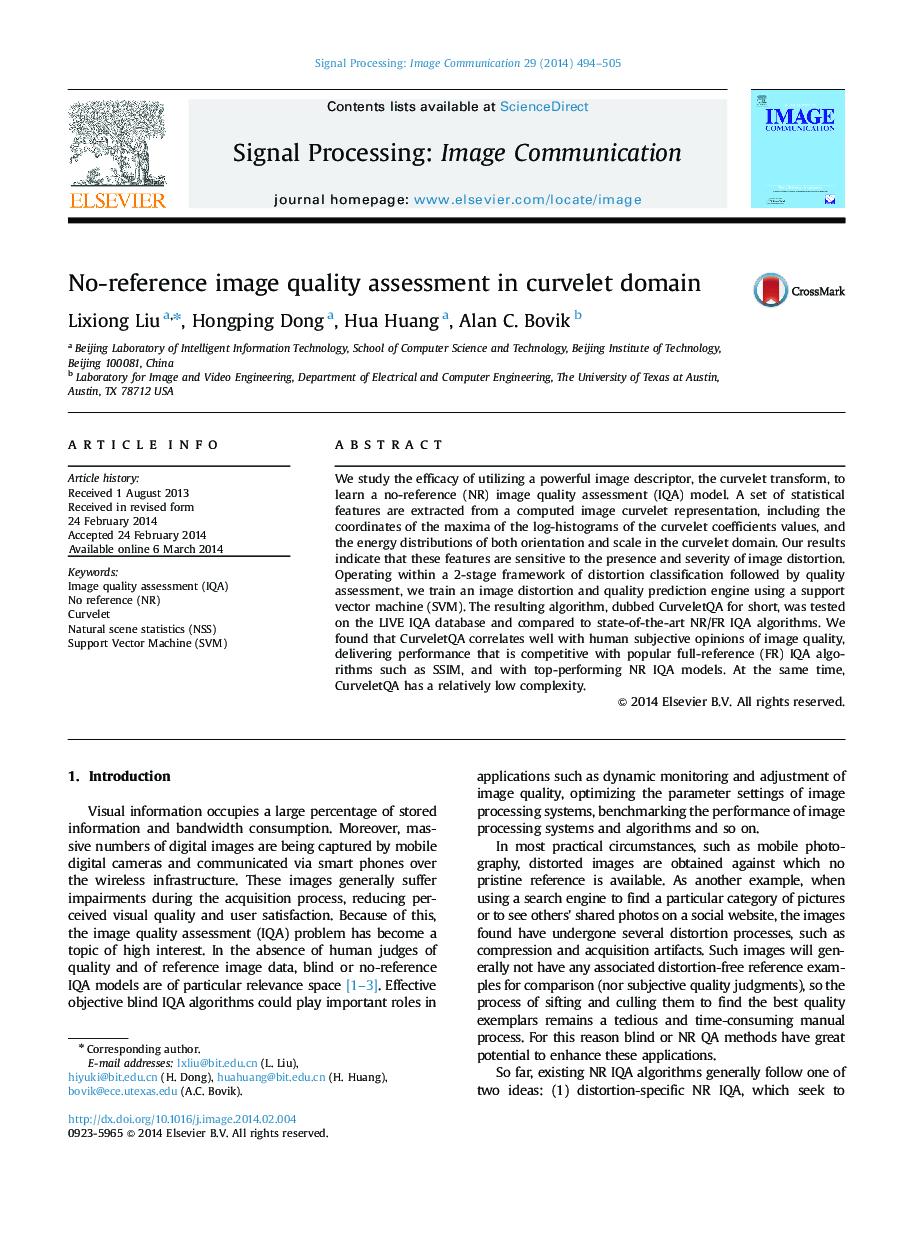| Article ID | Journal | Published Year | Pages | File Type |
|---|---|---|---|---|
| 536935 | Signal Processing: Image Communication | 2014 | 12 Pages |
•CurveletQA exploits a model of the log-pdf of curvelet coefficients to find the statistical correlations between curvelet scalar and orientation energy distributions and image distortions.•CurveletQA correlates highly with the human subjective impressions and has a relatively low time complexity.
We study the efficacy of utilizing a powerful image descriptor, the curvelet transform, to learn a no-reference (NR) image quality assessment (IQA) model. A set of statistical features are extracted from a computed image curvelet representation, including the coordinates of the maxima of the log-histograms of the curvelet coefficients values, and the energy distributions of both orientation and scale in the curvelet domain. Our results indicate that these features are sensitive to the presence and severity of image distortion. Operating within a 2-stage framework of distortion classification followed by quality assessment, we train an image distortion and quality prediction engine using a support vector machine (SVM). The resulting algorithm, dubbed CurveletQA for short, was tested on the LIVE IQA database and compared to state-of-the-art NR/FR IQA algorithms. We found that CurveletQA correlates well with human subjective opinions of image quality, delivering performance that is competitive with popular full-reference (FR) IQA algorithms such as SSIM, and with top-performing NR IQA models. At the same time, CurveletQA has a relatively low complexity.
